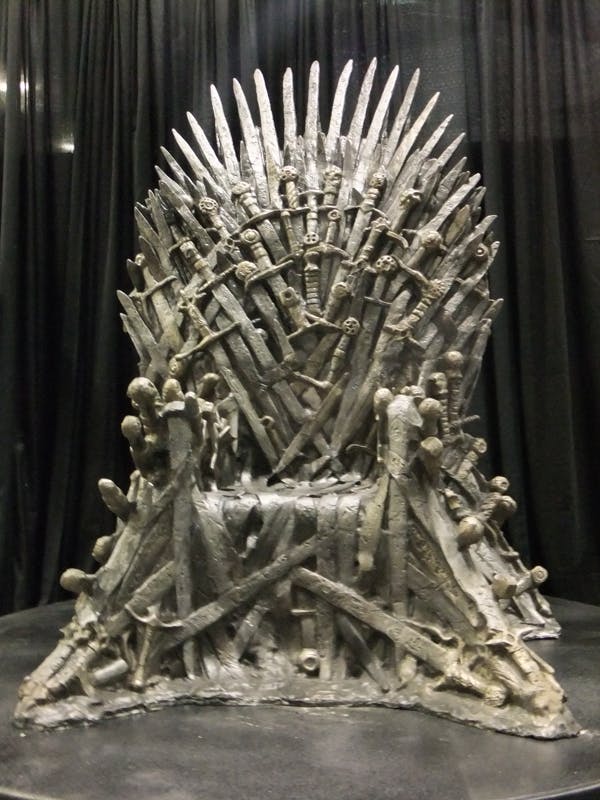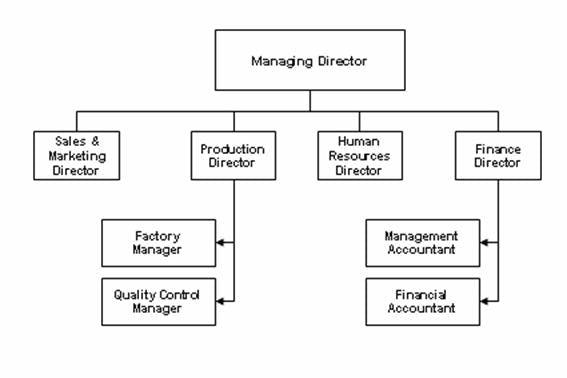On Rebuilding – Part 5, The Los Angeles Kings
By Kent Wilson
11 years ago(Rex continues his rebuilding Odyssey series. Today he looks at the Cup champs.)
By: RexLibris
What is the common belief about the Kings rebuild? Was it injuries that annihilated them and put them into a high draft position to which they then became addicted? Did ownership want to cut costs? Was it repeated failure to win a Stanley Cup after years of trying to import high-end talent?
For the sake of this series let us agree that the general theory about the rebuild in L.A. is that Lombardi was hired to do it right, regardless of the timeline, after many years of failing to win a championship by other means. Based on that premise would it be reasonable to hypothesize that Philip Anschutz and AEG hired Lombardi in order to gradually draft and develop a top-flight team that would bring a Stanley Cup to Los Angeles?
Game of Thrones

AEG purchased the Kings from Jeffrey Sudikoff and Joseph Cohen in 1995, ending a short-lived rebound relationship for that franchise after Bruce McNall sold the team in 1994*.
*(As an interesting footnote to history, it was McNall’s leadership of the Board of Governors at the time that shifted the vote in favour of Gary Bettman as the league’s commissioner)
AEG, for what it is worth, seems to be largely a hands-off owner, in NHL terms. Aside from hirings and firings, there appears to be little else that they directly influence in the day-to-day workings of the Kings team. They have multiple other sports franchise ventures, including heavy involvement in Major League Soccer. This diversification may lead to giving the Kings a welcome degree of autonomy.
AEG hired Dean Lombardi after firing Dave Taylor as President and GM of the Kings at the end of the 2005-2006 season. Following Taylor out the door was the coaching staff, assistant coaches and the CEO of the Kings, Tim Leiweke. Lombardi had worked most recently as a scout for the Flyers and was formerly the GM of the San Jose Sharks, so he came to the job with experience and a recent tutorial in the draft process.
The Draft Acquisitions
Prior to Lombardi’s hiring the Kings had already drafted players such as Dustin Brown, Jonathan Quick, and Anze Kopitar. All were players that would eventually give the team the bones around which to build in the future. Lombardi’s early tenure with the organization bears some telltale marks of an organization prioritizing the draft. There were very few bodies that the Kings could have offered in trade as they had all more or less already been traded away due to financial concerns following McNall’s ownership. Or had left in free agency.
However, Lombardi’s first trade was to send Pavol Demitra to the Minnesota Wild in exchange for Patrick O’Sullivan and a 1st round pick that became Trevor Lewis. Lombardi’s moves during the initial phase of his rebuild were, in what is now a standard rebuilding fashion, to move bodies for draft picks. In fact, following the trade with Carolina that sent Eric Belanger and Tim Gleason east for Oleg Tverdovsky and Jack Johnson, Lombardi made 18 consecutive trades (save a deadline day free agent rental of Jamie Heward where the Kings offered only a conditional draft pick that was not exercised) where LA received draft picks as their primary return.
Most of Lombardi’s moves were to target the peripheral players that wouldn’t be part of a new core and/or who would only have unrealized value on a fading team. Lombardi was trading away players like Sean Avery, Brent Sopel, Mattias Norstrom, Craig Conroy, Brad Stuart, and Michael Cammalleri. All of them were were solid NHL players to varying degrees, but had they remained on the Kings roster they would only have served to falsely inflate the performance of a fundamentally poor team.
Los Angeles turned some of those picks into Colten Teubert, Alec Martinez, and Wayne Simmonds. After emphasizing the draft Lombardi spent a great deal of time wheeling and dealing his way through the draft order. On June 20th 2008, Lombardi was a key architect of a deal that saw the Flames acquire Cammalleri and a 2nd round pick (Mitch Wahl), the Buffalo Sabres get the 12th pick overall (Tyler Myers – originally the 1st round pick that the Oilers forfeited to Anaheim in the Dustin Penner offer sheet), the Ducks would receive two first round picks, 17th and 28th overall that were used on Jake Gardiner and Viktor Tikhonov, respectively, and the Kings got a first round pick, 13th overall (Colten Teubert), a 2nd round pick (Brian Dumoulin) and a 2009 3rd round pick later sent to the Flames (Ryan Howse) for two more picks in the 3rd and 4th round of that year’s draft.
When Lombardi is accused of being a used-car salesman it is not entirely without some merit based on his aggressiveness in dealing players and picks. In spite of all this, the Kings never reached the levels of draft day bonanza that the Blackhawks did in 2004. In the 2007 and 2009 draft years, the Kings had ten picks in the seven rounds. In 2006 and 2008 they had nine. Both are rates higher than most playoff-level and championship teams, but not in the realm of a meltdown-rebuild similar to Chicago in 2004 (17 picks) or Washington in 2002 and 2004 (13 picks in each of those years).
So while Lombardi has been aggressive in his acquisition of draft picks for his team, often loading up on selections beyond the standard one pick per round, he has never exceeded the usual upper limit for rebuilding teams of ten picks in a given year.
With all those selections, did the Kings have any more success than other rebuilding teams at the draft table? Between 2005 and 2009, LA made 46 selections in the amateur draft: seven 1st round picks, seven 2nd round picks, eight in the 3rd round, five in the 4th, seven in the 5th, five in the 6th, and seven in the 7th. Ten of those picks have had an impact on the NHL level in Kopitar, Quick, Lewis, Jonathan Bernier, Wayne Simmonds, Alec Martinez, Drew Doughty, Brayden Schenn, Vyacheslav Voynov and Kyle Clifford. That is a 21.7% success rate, well above the league average of approximately 13%.
The Kings have never won the draft lottery, despite being in the top five three times in the last five years. They have been fortunate in the emergence of some of their depth draft selections in Jonathan Quick and Alec Martinez. However, it should be noted that many of the impact players the club drafted and developed have been selected in the first, second or third rounds.
During this rebuilding period the Kings had the misfortune of being a terrible team in an era of terrible teams. In 2007, they were only bad enough to be able to draft as high as 4th overall where they (mistakingly) took Thomas Hickey. The following year the Kings were bad enough, and their draft-day competitors in Pittsburgh, Chicago and Washington had improved enough, that they were able to draft 2nd overall (Drew Doughty). The year after, they climbed as high as 5th overall and selected Brayden Schenn.
Out of those lottery picks, only Doughty has had any direct impact on the team. Hickey is still developing but at this point appears unlikely to cover the Kings bet in taking him so high, while Schenn was part of the exchange that brought in Mike Richards. For those who believe the lottery is an uncertain, or unnecessary, path to building a team, the Kings provide a confirmational case study.
Nevertheless, the success rate of the Kings drafting and the talent that they were able to add throughout the draft in a relatively short period of time (seven years from the hiring of Dean Lombardi to their appearance in a Stanley Cup final as a favoured team after a dominant playoff performance) should speak to how a draft-and-develop strategy can work when well-executed. The Kings have also suffered their fair share of prospect defections with Oscar Moller, Bud Holloway, John Zeiler and Corey Elkins all leaving the AHL to play in Europe. Their value as prospects can be debated given the team’s success without them, however, the fact that all four played for the Monarchs just prior to leaving suggests that there are some issues to resolve, either with the AHL franchise or with the character assessments by the Kings’ scouts.
My Kingdom for a Kovalchuk
In 2009-2010 Lombardi finally stopped selling and started buying.
Or at least he tried to.
When Ilya Kovalchuk went on the market during the February trade deadline in 2010, LA was one of the final bidders, losing out to New Jersey. Lombardi was very displeased with missing out on Kovalchuk, and instead acquired first Alexei Ponikarovsky as a free agent, then traded for Ryan Smyth in the same off-season. He also added Jeff Halpern and Fredrik Modin, then Dustin Penner, Mike Richards and most recently Jeff Carter.
When Lombardi has chosen a direction for the Kings he has pursued it aggressively. As an example, recently trading 1st round draft picks in consecutive years* for forwards Carter and Penner. Lombardi has never shied away from making roster moves and is seemingly fearless about moving nearly any asset, be it a roster player or highly-coveted prospect, for what he perceives as a net gain for the franchise.
*(Columbus had the option of deferring the L.A. draft pick in the Carter deal to 2013)
A Business Hierarchy

The Manchester Monarchs of the AHL, the Kings’ affiliate, are also owned by AEG. This connection should not be understated as it provides the franchise with an opportunity for a great deal of control and consistency in the player and prospect experience. If run well, this kind of partnership can strengthen a franchise and give it a valuable competitive edge in the area of roster depth and continuity.
The Kings management has been largely unfettered by an intrusive ownership. Dean Lombardi has had a free financial hand with no internal player budget to consider outside of the salary cap. The ownership group controls both the NHL and AHL teams and thus has a single, continuous voice throughout the player development process. Drafting has been a strength of the franchise for the last decade and the Kings have benefited from some timely player acquisitions. The Kings Stanley Cup win this year was too late to make good on the goal of being the first Californiam, but it was still the culmination of many years of slow (at during more recent times, frantic), deliberate building.
On Rebuilding Series:
Recent articles from Kent Wilson





